| Cradle of Accordions Festival | |
|---|---|
| Genre | Folk music, vallenato |
| Dates | September |
| Location(s) | Villanueva, Department of La Guajira, Colombia |
| Founders | Israel Romero |
| Website | Official website |
The Cradle of Accordions Festival (Spanish : Festival Cuna de Acordeones) is a festival in the Colombian northern town of Villanueva, Department of La Guajira in the month of September. The Cradle of Accordions Festival is celebrated on the same day as Saint Thomas and many vallenato musicians from the Department of Cesar and La Guajira gather to participate in an accordionist contest. The religious event is celebrated with a mass, a procession and fireworks. [1] In 2006 the Senate of Colombia by Law 1052 of this same year declared the Cradle of Accordions Festival as a Cultural and Artistic Patrimony of Colombia. [2] The president of the event is Binomio de Oro de America accordionist and owner Israel Romero. [3]

Valledupar is a city and municipality in northeastern Colombia. It is the capital of Cesar Department. Its name, Valle de Upar, was established in honor of the Amerindian cacique who ruled the valley; Cacique Upar. The city lies between the mountains of the Sierra Nevada de Santa Marta and the Serranía del Perijá to the borders of the Guatapurí and Cesar rivers.

Vallenato is a popular folk music genre from Colombia. It primarily comes from its Caribbean region. Vallenato literally means "born in the valley". The valley influencing this name is located between the Sierra Nevada de Santa Marta and the Serranía de Perijá in north-east Colombia. The name also applies to the people from the city where this genre originated: Valledupar. In 2006, vallenato and cumbia were added as a category in the Latin Grammy Awards. Colombia's traditional vallenato music is Intangible Cultural Heritage in Need of Urgent Safeguarding, according to UNESCO.

The carnival in Colombia was introduced by the Spaniards. The Colombian carnival has incorporated elements from European culture, and has managed to syncretise, or re-interpret, traditions that belonged to the African and Amerindian cultures of Colombia. There is documentary evidence that the carnival existed in Colombia in the 17th century and had already caused concern to the colonial authorities, who censored the celebrations, especially in the main centers of power such as Cartagena, Bogotá and Popayán. The carnival, therefore, continued its evolution and re-interpretation in the small and at that time unimportant towns where celebrations did not offend the ruling elites. The result was the uninterrupted celebration of carnival festivals in Barranquilla, and other villages along the lower Magdalena River in northern Colombia, and in Pasto, Nariño in the south of the country. In modern times, there have been attempts to introduce the carnival in the capital, Bogotá, in the early 20th century, but it has always failed to gain the approval of authorities. The Bogotá Carnival has had to wait until the 21st century to be resurrected, this time, by the authorities of the city. Colombia is recognized by its large variety of festivals, carnivals and fairs. Most towns have their own, ranging from those celebrating coffee to the ones held in honor of the town's Saint feast. The common characteristics of the festivals are the nomination of a beauty Queen and the setting up of public dance floor.

The Vallenato Legend Festival is one of the most important musical festivals in Colombia. The festival features a vallenato music contests for best performer of accordion, caja vallenata and guacharaca, as well as piqueria and best song. It's celebrated every year in April in the city of Valledupar, Department of Cesar.
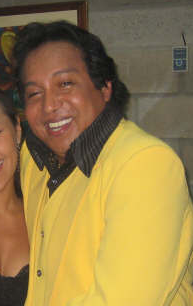
Diomedes Díaz Maestre was a Colombian vallenato singer, songwriter, and composer. He has been named the "King of Vallenato" and is nicknamed El Cacique de La Junta, which was given to him by another vallenato singer, Rafael Orozco Maestre, in honor of Díaz's birthplace.
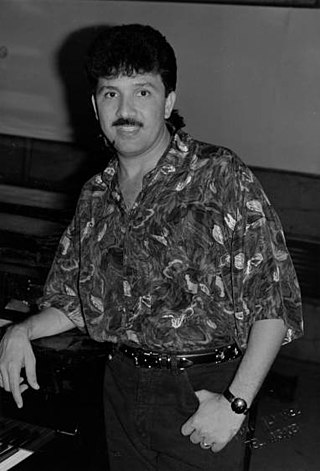
Rafael José Orozco Maestre was a Colombian singer of vallenato music. He was one of the major representatives of Colombian popular folk music and was lead singer and co-founder, alongside fellow accordionist Israel Romero, of the vallenato group Binomio de Oro de América, which was very popular in Colombia, Mexico and Venezuela.
Nicolas Elias Mendoza Daza, also known as Colacho Mendoza, was a Colombian Vallenato accordion player and was crowned king of accordion players on many occasions in the Vallenato Legend Festival. He was born in a small village called Sabanas de Manuela in the municipality of Barrancas, La Guajira Department, in northern Colombia.

Jorge Antonio Oñate González was a Colombian singer and composer, one of the most renowned of the vallenato musical genre. As of 2004 and since the beginning of his career in 1968 he had achieved 25 gold discs, 7 platinum discs and 6 double platinum for his sales, among other numerous musical accomplishments. He had also successfully entered politics as councilor of his hometown, while deputising for Alfredo Cuello Dávila, representing the department of Cesar.
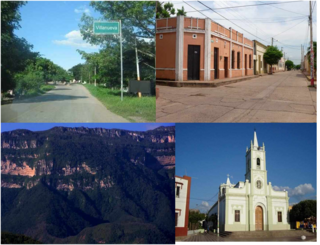
Villanueva is a town and municipality located in the northern Department of La Guajira, Colombia. Villanueva is known in Colombia for being the cradle of many vallenato singers and composers. The economy of the town relies heavily on agriculture and farming.

Fonseca is a municipality located in the Colombian Department of La Guajira. The town celebrates the Festival del Retorno in honor of St Augustine with religious celebrations, vallenato music events and others.

Juan Mario De la Espriella better known as Juancho De la Espriella is a Colombian musician interpreter of vallenato in accordion. De la Espriella is the current accordionist of Colombian vallenato singer Martin Elias Diaz.
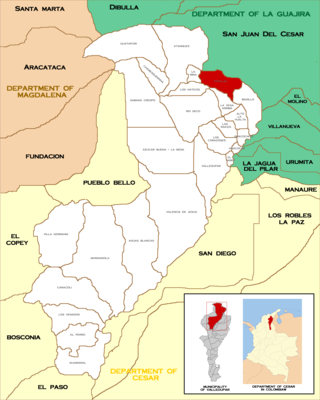
Patillal is a village and corregimiento in the municipality of Valledupar within the Colombian Department of Cesar. The town lies on the steps of the Sierra Nevada de Santa Marta with a semi-arid terrain.
Juan Humberto Rois Zúñiga (December 25, 1958 – November 21, 1994, popularly known as Juancho Rois and nicknamed El Conejo was a Colombian vallenato musician, accordionist, and composer.

Evel Antonio Jiménez Centeno, known in the artistic world as Jean Carlos Centeno is a Colombian-Venezuelan singer and composer of vallenato, bolero and salsa. Centeno gained fame as singer and composer for the vallenato group Binomio de Oro de America. On December 31, 2005 Centeno left the Binomio de Oro to pursue his own vallenato group along accordionist Juan Fernando "Morre" Romero. In 2006 Centeno and Romero released the album Ave Libre.
The Festival of the Laurels is a festival in Colombia. The festival takes place in the town of Distraccion, in the Department of La Guajira. The festival is folkloric event and celebrates the vallenato music. The festival was named after the Laurel trees planted at the main plaza in downtown Distraccion.
Leandro José Díaz Duarte was a Colombian vallenato music composer. He is mostly known for his ability to compose very descriptive and narrative vallenato songs despite his blindness. His songs have been recorded by many Colombian musicians including Carlos Vives, Diomedes Diaz, Jorge Oñate, Ivan Villazon, among others.
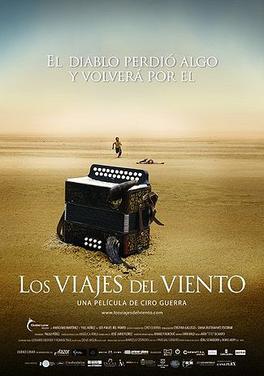
The Wind Journeys is a 2009 Colombian-German-Argentine-Dutch drama film written and directed by Ciro Guerra. It was filmed in 80 locations in Northern Colombia and is spoken in Spanish, Palenquero, Wayuunaiki, and Ikun. It was selected as the Colombian entry for the Best Foreign Language Film at the 82nd Academy Awards, but was not nominated.